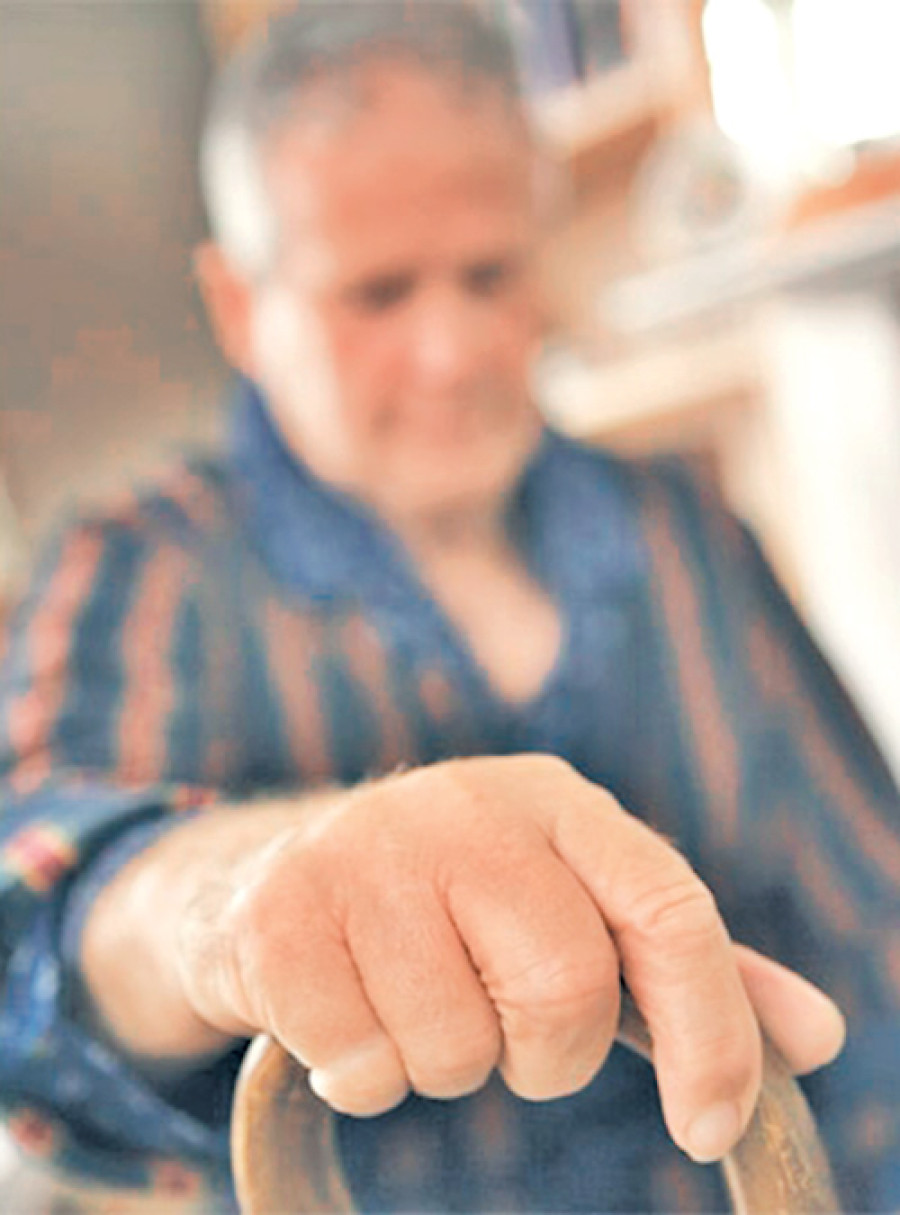Opinion
Don’t forget them
Problem of Alzheimer’s disease in the country is bound to worsen with the increase in life expectancy
Sharad Koirala
World Alzheimer’s Month is marked in September and World Alzheimer’s Day on September 21. Alzheimer’s disease (AD) is commonly recognised as a disease of forgetfulness occurring in old age. It is usually seen after 60 years of age, but has been seen to occur as early as 50 years in Nepal. The dementia or forgetfulness is progressive, starting with forgetting small things like keys and money and gradually progressing to forgetting regular work, people and addresses. At the terminal stage, the patient even forgets basic things like talking, sleeping and swallowing food and usually dies due to starvation, choking, aspiration pneumonia and sepsis due to bed sores.
According to the World Alzheimer’s Report 2015 published by Alzheimer’s Disease International (ADI), there were about 46.8 million people suffering from dementia in the world in 2015. There were an estimated 78,000 patients in Nepal in 2015. The figure is expected to swell to 134,000 in 2030 and 285,000 in 2050. Global expenditure on dementia in 2015 was estimated to be $818 billion.
Out of reach
The Ministry of Women, Children and Social Welfare and the Ministry of Health are responsible for formulating policies and programmes related to AD in Nepal. The Social Welfare Ministry deals with tasks related to the elderly, but it has not been able to go outside the Kathmandu Valley. It has conducted a study about the prevalence of AD in old-age homes in the valley and held a training programme for caretakers. The Health Ministry provides free medical check-ups, investigations and medicines worth Rs100,000 to patients with AD. The hospitals enlisted to provide these free services are the National Academy of Medical Sciences, Tribhuvan University Teaching Hospital and Patan Academy of Health Sciences in the Valley and the BP Koirala Institute of Health Sciences in Dharan.
These two ministries have been conducting programmes on AD regularly, but they fall short of the requirement. The Social Welfare Ministry needs to hold regular programmes to raise public awareness about the disease and provide training to caretakers in places outside the Valley besides expanding its work in the Valley. Though the Health Ministry has been providing free check-ups and medicines, it is not enough as most of the costs of treatment occur outside the hospital; and there are no arrangements to provide assistance in such cases. Also, the number of hospitals providing free services is very small, with most of them being concentrated within the Kathmandu Valley which means they are out of reach to most patients elsewhere in the country.
The Health Ministry needs to disseminate information about its facilities to all corners of the country so that all patients eligible to receive them know about them and can benefit from them. Only nine patients have received these facilities in the last three fiscal years, which shows that the programme has not achieved its intended objectives. The two ministries do not have any plans to establish memory clinics and residential care centres for patients with AD which is the foremost necessity in managing the disease.
Bound to happen
There are a few organisations like Ageing Nepal, Alzheimer’s and Related Dementia Society, Nepal (ARDS, Nepal) and Hope Hermitage working on Alzheimer’s disease and dementia. The minimal work done by these organisations started only after 2010. Lack of manpower, money and social support from the government or the nongovernmental sector has affected their work. A bimonthly magazine, monthly e-newsletter and weekly radio programme being produced by Ageing Nepal, a few memory clinics and an Alzheimer’s hotline run by ARDS, Nepal and an old-age home providing special facilities for patients with AD associated with the Hope Hermitage are not able to cater for the needs of the 78,000 patients in the country.
These organisations also come together to conduct workshops and seminars on the subject, but the need of the hour is taking the programmes to the public and making them aware about the disease and making the lives of the patients easier. These organisations need to take their programmes to places outside the Kathmandu Valley so that more patients can benefit from their services. Lack of manpower and proper infrastructure in the government and nongovernmental sectors has also been affecting patients and their families. There are not enough doctors, nurses and caretakers trained to take care of patients with AD in the country. There is no proper infrastructure like geriatric departments and memory clinics in the hospitals and residential care centres to take care of AD sufferers.
To conclude, we are nowhere near prepared to tackle the impending problemee of AD in the country which is bound to happen with the increase in life expectancy and the population of people above 60 years. Work needs to be started immediately at the government, nongovernmental and individual levels. We need a good policy and massive funds from the government, a lot of organisations working for the cause from civil society all over the country, a lot of publicity from the press and a massive increase in manpower and infrastructure to protect society from the coming disaster.
Koirala, a medical doctor, is pursuing a Master’s degree in Public Health from Padmashree School of Public Health, Bangalore, India




 10.12°C Kathmandu
10.12°C Kathmandu










